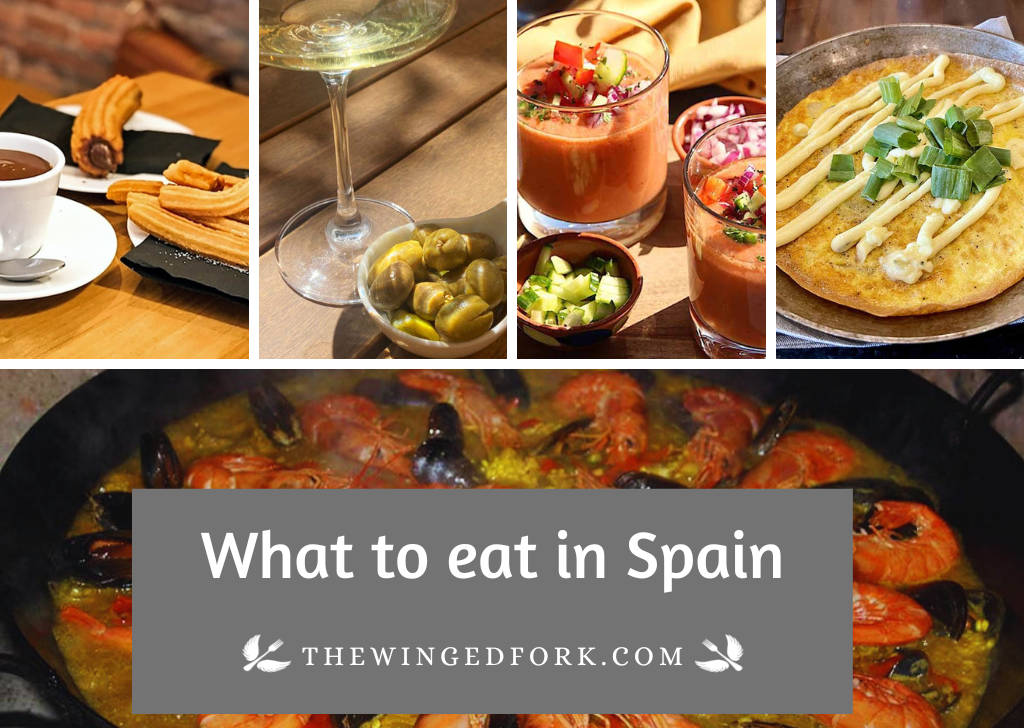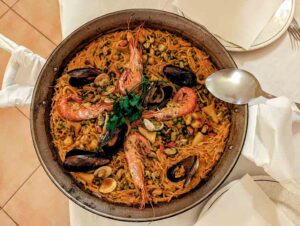From tapas and croquetas, to paella and horchata, Spanish food offers a variety of flavors and textures to please the senses.
Food is a big part of the culture in Spain, and every dish has a story to tell. From regional dishes to international favorites, here are some of the best dishes you must eat in Spain when you visit.
1. Paella
By Abby from Abby’s Plate
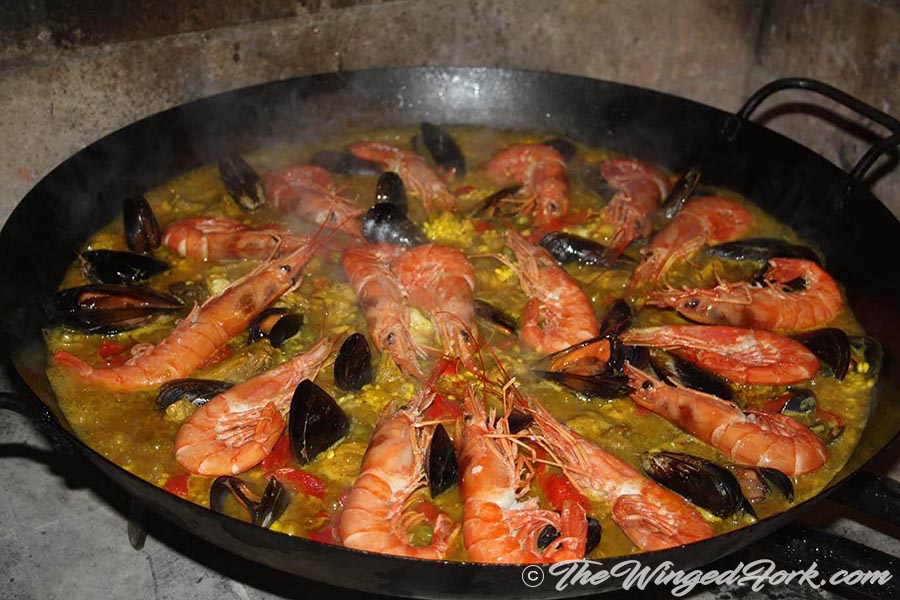
While it may have Moorish origins dating back to the 10th century, paella in Spain is said to have originated in Valencia.
Taking the name of the dish in which it’s made, the popular paella valenciana consists of short-grain rice, meats such as chicken or rabbit, green beans, butter beans, and a few other ingredients cooked in chicken broth and olive oil. Saffron gives the dish color, but turmeric helps too.
Now, you can’t visit Spain and not eat paella. A typical Sunday dish, paella is eaten in Spanish homes almost every Sunday. And making it is quite a satisfying tradition.
When on a visit to Mallorca recently, we had a chance to learn how to make paella from our landlady. The local Incan version (Inca in Majorca, not the Mayan Inca!) is more like the paella mixtas, but has peculiarities that are special to each family. You can actually try this traditional Spanish paella mixtas recipe yourself!
2. Horchata with fartons
By Lara from Valencia Revealed

By Lara from Valencia Revealed
‘Horchata with fartons’ is a beloved beverage and pastry pairing from Valencia.
Horchata is a sweet, velvety drink made from tiger nuts. It is served ice cold, has a nutty flavor, and is typically paired with these elongated pastries dusted with powdered sugar, called ‘fartons’.
This heavenly combination is a refreshing summer treat and one of several must try foods in Valencia. On top of that, horchata is quite healthy and is usually enjoyed by anyone with a sweet tooth.
Tiger nuts (called chufa in Spanish) have been cultivated in Spain since the 11th century. Nowadays, the only chufa fields in the country can be found in the Valencia region.
3. Ham
By Maria from Europe Up Close
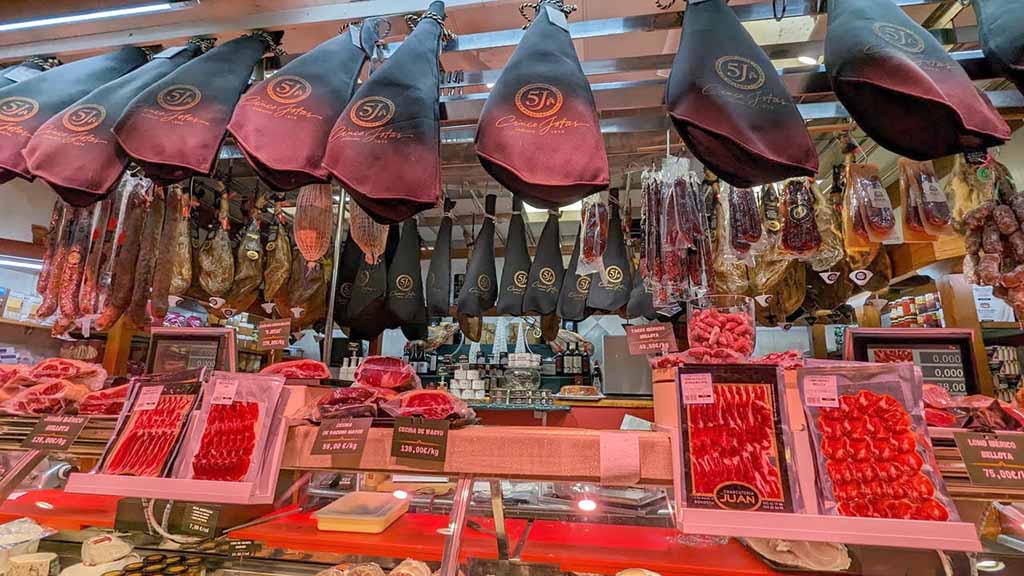
By Maria from Europe Up Close
When you visit Spain, the famous Spanish ham has to be on your list of thing you must try. There are actually two varieties: Jamon Serrano and Jamon Iberico.
Jamon Iberico, the more expensive version, only comes from the famed Black Iberian pigs. It is fattier and nuttier in taste and its texture is much more delicate.
Jamon Serrano can come from a variety of pigs and has less fat, making the texture a bit more dense. It is usually eaten as a sandwich meat or as a tapas or pintxos – a small plate or appetizer often served with drinks in Spain.
Interestingly enough, ham wasn’t always that popular in Spain. During the 15th century, the time of the Spanish Inquisition, Inquisitors would hold public dinners.
They would serve dishes with ham and if someone did not eat the meat, they were exposed as Jews or Moores and expelled from Spain. But please don’t let this dark part of Spanish history deter you from trying this delicious delicacy.
4. Turron
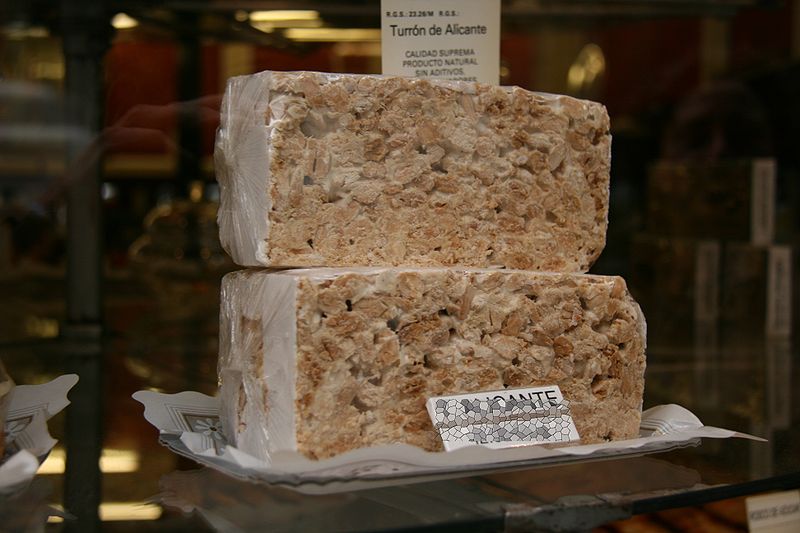
Pic by Tamorlan from Wiki CC by SA 3.0
After moving to Spain in 2017, the one Spanish food that I got addicted to – well, not addicted – but I had to have it almost every day, is the turron.
A confectionary made of honey, sugar, and egg whites sprinkled with almonds or pistachios, it reminded me of the shrikhand we used to have back home in Mumbai.
A dessert that’s been around for centuries, the oldest known recipe for the turron can be found in the Manual de Mujeres (Women’s handbook) from the 16th century.
You can find hard and soft versions of turron. The hard version is called Alicante and is so tough you sometimes need a mortar and pestle, or a rock to break it into pieces.
The soft version called Blando is crumbly in texture and this is the one that reminds me of shrikhand.
Whichever version you prefer to eat – both are delicioso!
5. Graellada de Peix
By Tanya Taylor from Travel and Treasures
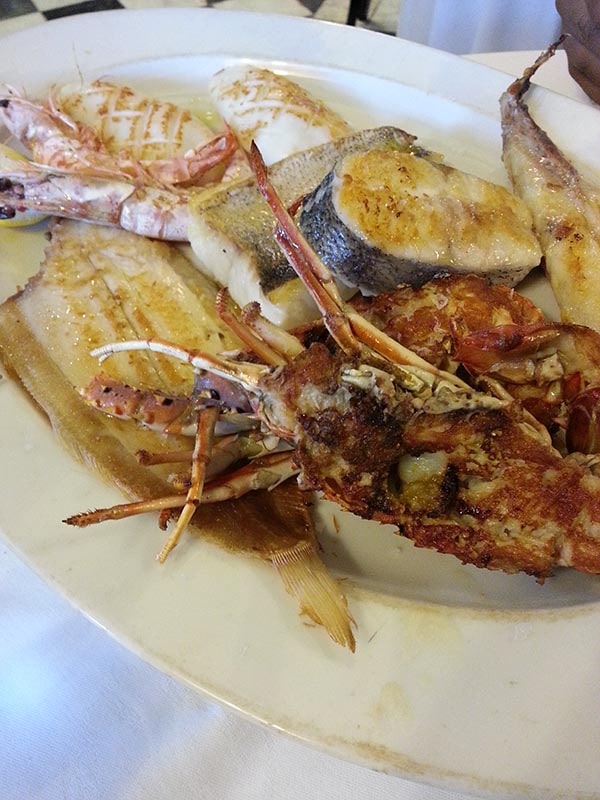
By Tanya Taylor from Travel and Treasures
Attention fish lovers! This seafood platter originated in the sunny coastal fishing region of Catalonia, where fresh fish is abundant and enjoyed.
Graellada de Peix showcases the bounty of the Mediterranean Sea with a colorful assortment of seafood, including fish, shrimp, squid, and mussels.
Everything is grilled to perfection on a sizzling hot plate or “graelles” as the locals call it and seasoned with fragrant herbs and a generous drizzle of olive oil. The dish is a staple in many Spanish seafood restaurants.
The local catch and mouth-watering flavors produce a distinctive and fresh taste. Share the platter with friends or family and toast to a magnificent meal with a crisp white wine or cava.
6. Garbanzo Con Espinacas
By Milijana from World Travel Connector
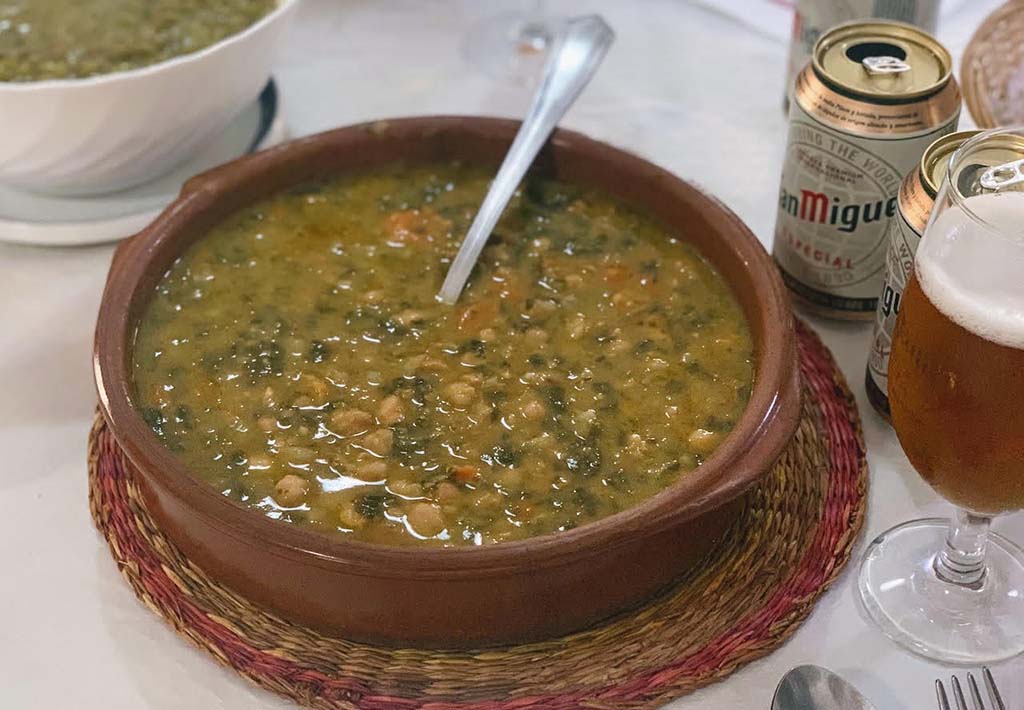
By Milijana from World Travel Connector
Chickpeas with spinach soup (garbanzo con espinacas) is a typical tapa dish from Seville. The soup is made with chickpeas, spinach, lots of extra-virgin olive oil, toasted breadcrumbs, salt, pepper, and flavourful spices like garlic, cumin, ground coriander, and paprika. This easy-to-make tapa originates from Seville, but it is among the most popular dishes in Andalusia and Spain.
Moors made this famous Spanish soup first in Seville in the Middle Ages. Medieval Moors had a long tradition of using chickpeas in preparing flavourful dishes. Chickpeas are a common ingredient in many popular Arab dishes.
However, since this tasty dish was in line with Kosher, it got widely accepted among the medieval Sephardic Jewish community in southern Spain. Besides that, this meatless dish became popular among Christians as a perfect Lent dish.
In addition, garbanzo con espinacas became one of the most popular dishes in Andalusia and Spain for its tastiness and simple recipe.
Savoring authentic tapa dishes, like garbanzo con espinacas, while visiting the capital of Andalusia is among the best things to do in Seville, Spain.
7. Pulpo Gallego
Contributed by Shandos Cleaver of Travelnuity: Dog-Friendly Travel
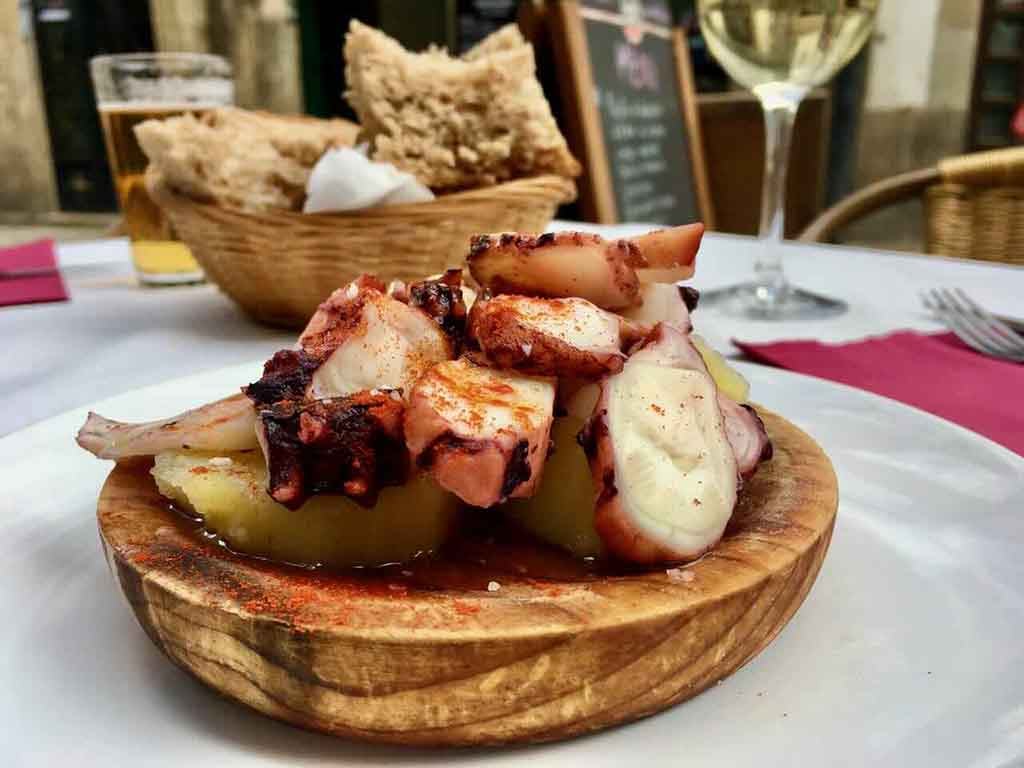
By Shandos Cleaver of Travelnuity: Dog-Friendly Travel
Pulpo Gallego, or Galician-style octopus, is a tapas dish that originated in the Galician region of northwestern Spain, thanks to the octopus frequently caught by local fisherman. However, these days you’ll find the dish served at tapas restaurants all over Spain, especially close to the coast.
A relatively simple dish, the star of Pulpo Gallego are the succulent pieces of octopus, boiled slowly to keep it tender. The octopus chunks are then drizzled with high-quality olive oil and sprinkled with sweet Spanish paprika and salt. Usually, it’s served upon a bed of slices of boiled potato.
So simple yet so tasty, make sure you order Pulpo Gallego next time you visit Spain. And ideally match it with a dry white wine, Spanish of course.
8. Croquetas
By Liza Sharifuddin from Always in Spain
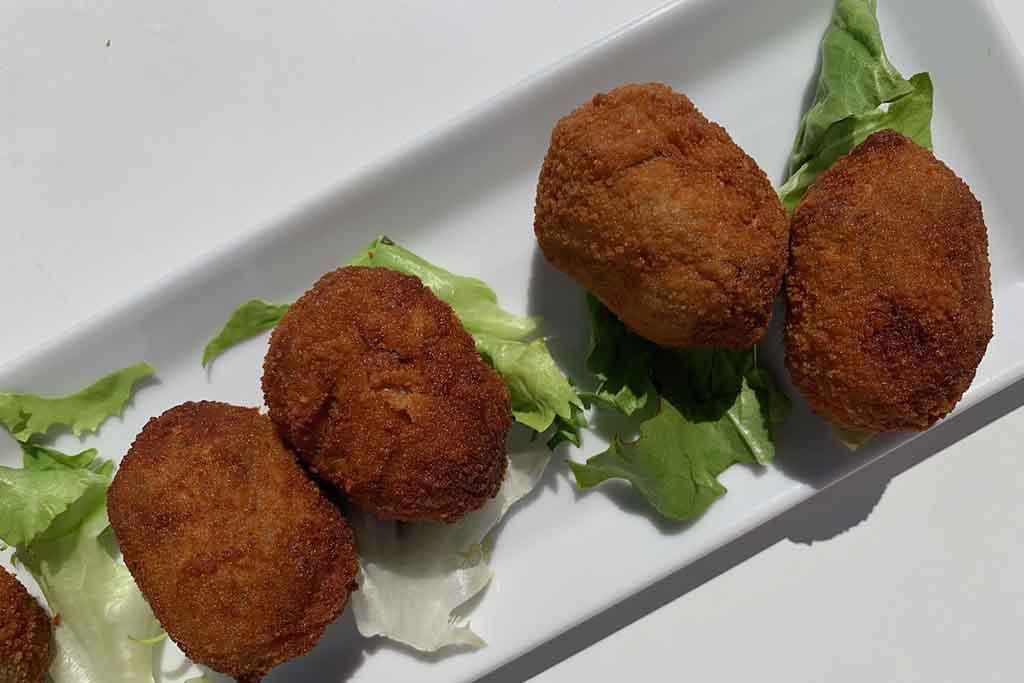
By Liza Sharifuddin from Always in Spain
The croquette originated from France in the late 1690s but the Spanish have put their own twist on these yummy fried balls. Today, croquetas are a staple Spanish food and you can easily find them on any tapas menu.
Croquetas began simply as a way to prevent food wastage by using any leftover meat or vegetables. While the French croquette uses a potato base, Spanish croquetas are made with a bechamel sauce. Coated in breadcrumbs, these little balls of joy are then deep-fried for the perfect crunchy exterior.
Be sure to try croquetas de jamón, the most popular croqueta variation with iberian ham. Another must-try is croquetas de rabo de toro which uses oxtail as the filling and can typically be found in Andalucian cities like Seville, Granada, and Malaga.
Many tapas bars experiment and create their own unique and tasty croquetas with different fillings so it’s super fun to try various flavors!
9. Pan Tomate
By Liz Zie (Annelies) from Travelers & Dreamers
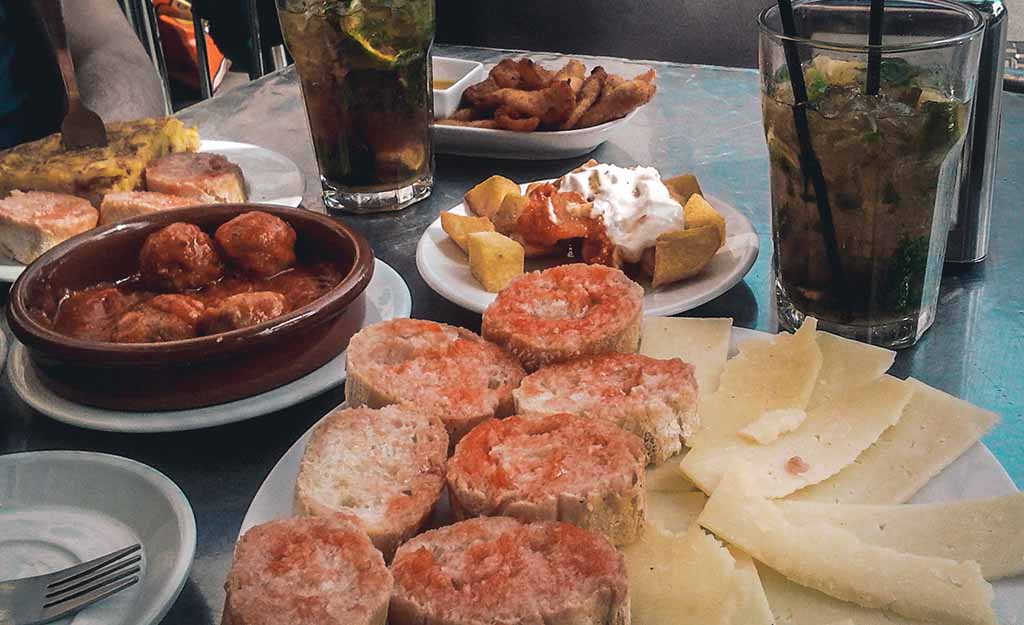
By Liz Zie from Travelers & Dreamers
Pan tomate is a Spanish tapa and one of the world’s simplest dishes. It contains only five ingredients: toasted bread, ripe tomatoes, olive oil, garlic, and salt. Pan tomato of Pan con tomate is a tapa from Catalonia but gets served all over Spain.
The first mention in history of Pan tomato dates back to the nineteenth century. According to a Catalan cooking historian, Nestor Lujan, the recipe for Pan tomate was invented after a very good harvest with an abundance of tomatoes. Because people didn’t know what to do with all these tomatoes, they create this simple dish, mainly to soften up old bread again.
Pan tomate can vary depending on the region you’re visiting. While it generally gets eaten as a tapa throughout Spain, in certain areas, like for example Madrid and Andalucia, it is a staple breakfast dish.
10. Bacalao Al Pil Pil
By Trisha Velarmino from PS I’m On My Way
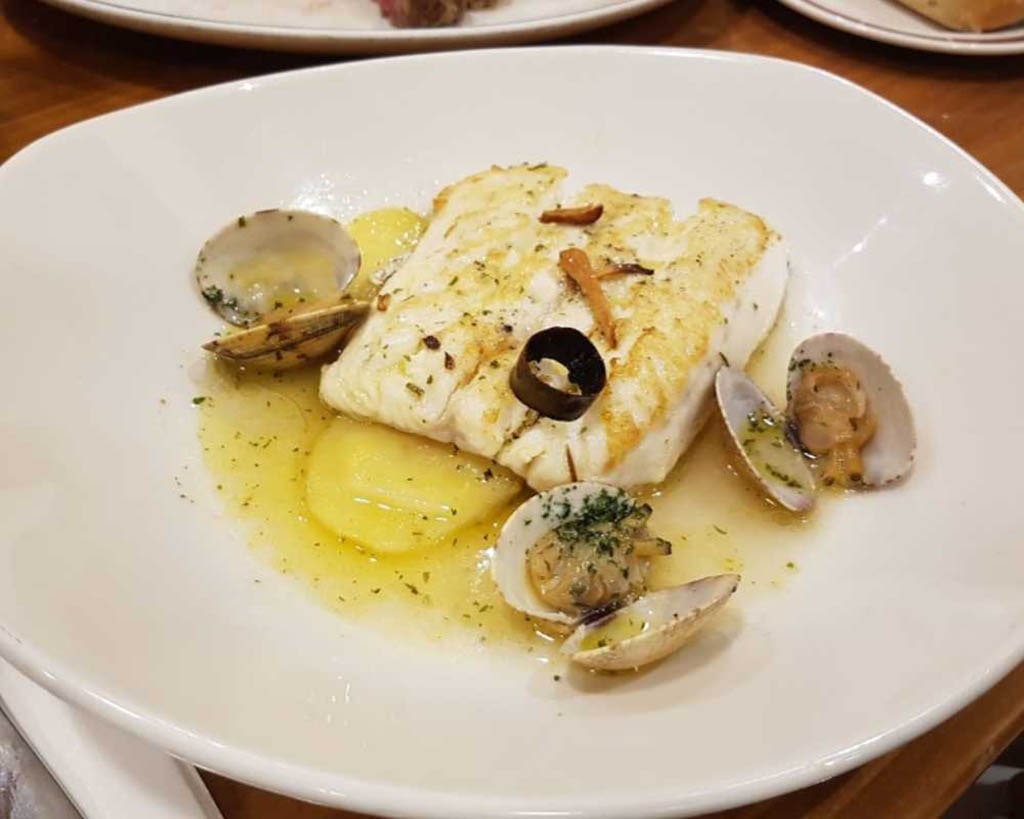
By Trisha Velarmino from PS Im on my way
Bacalao al Pil Pil is a traditional Basque dish from northern Spain’s coastal region. This flavorful and hearty meal dates back to the 19th century when Basque fishermen, among the pioneers of cod fishing in the North Atlantic, would bring salted cod back to their homeland. The dish emerged as a creative and resourceful way to combine the preserved fish with simple, readily available local ingredients.
The name “Pil Pil” refers to the unique emulsion of olive oil, garlic, and guindilla peppers that the cod is cooked in, creating a rich, velvety sauce that has become the hallmark of this iconic Basque recipe.
This is one of the dishes you should try in the Basque area of Spain. This dish showcases the perfect harmony between the delicate flavors of salted cod and the bold, spicy Pil sauce notes, making it a true delight for the senses.
The Basque is the birthplace of Bacalao al Pil Pil, so this is really the best place to try it. This region of Spain has a deep connection to the sea and its traditions.
Many local restaurants and taverns (especially in Bilbao) pride themselves on their unique interpretations of this classic dish, so you may encounter different variations. If you are in Barcelona or Catalonia and can’t make it to the Basque, check out Nuria Restaurant for an authentic Bacalao Al Pil Pil dish!
Bacalao al pil pil is rich, spicy, and slightly salty so it will be great with white wine. For this, check out Rías Baixas region in Galicia, known for its Albariño grape variety.
Albariño wines typically exhibit crisp acidity, subtle minerality, and fruity aromas, making them an ideal pairing for Bacalao al Pil Pil. The wine’s acidity helps to cut through the dish’s richness, while the fruity notes complement the salted cod and the spicy Pil Pil sauce.
11. Papas Arrugadas (Canary Potatoes and Mojo Sauce)
By Anu from Country Hopping Couple
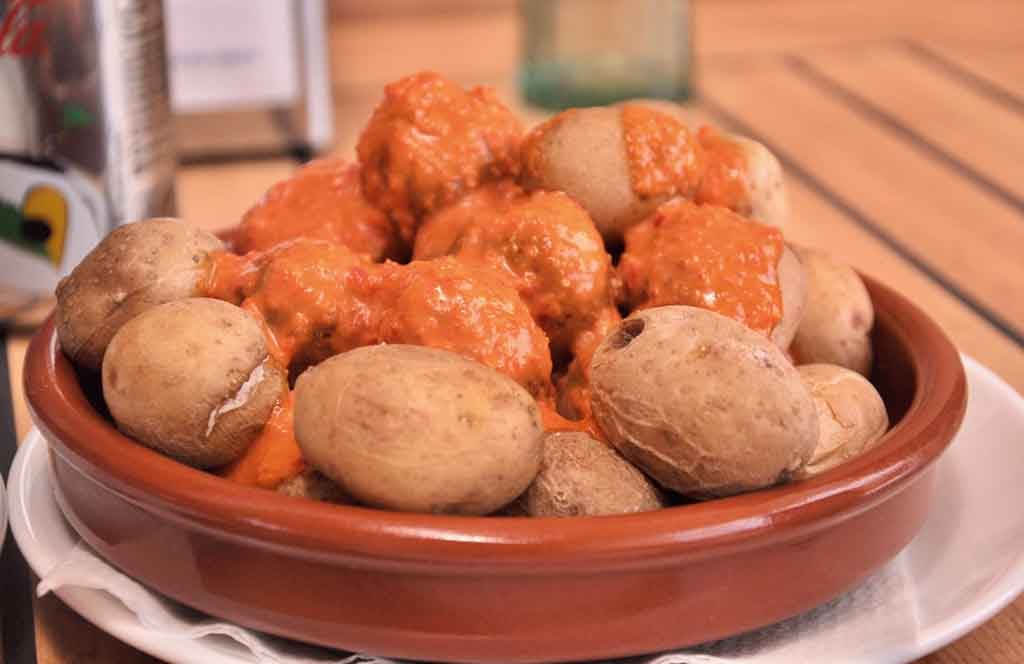
By Anu from Country Hopping Couple
Canary potatoes, also known as Papas Arrugadas (translates to wrinkled potatoes) are a staple food and an authentic tapas across the Canary Islands in Spain. Papas Arrugadas is naturally vegan, gluten-free and is such a delicious food.
Canary Baby potatoes are boiled in salt water until they are cooked and the skin is wrinkled. It is usually served with Mojo Sauce, which is either Mojo Verde (green) or Mojo Rojo (red). The hot and salty potatoes compliment so well with either of the sauces, although Mojo Rojo is slightly a spicy variant.
Papas Arrugadas is very popular in the Canary Islands and you can find them on the menu of almost every restaurant. If you happen to visit Gran Canaria or Tenerife, don’t forget to taste Papas Arrugadas.
12. Gazpacho
By Sabine de Gaspari from Discover Spain Today
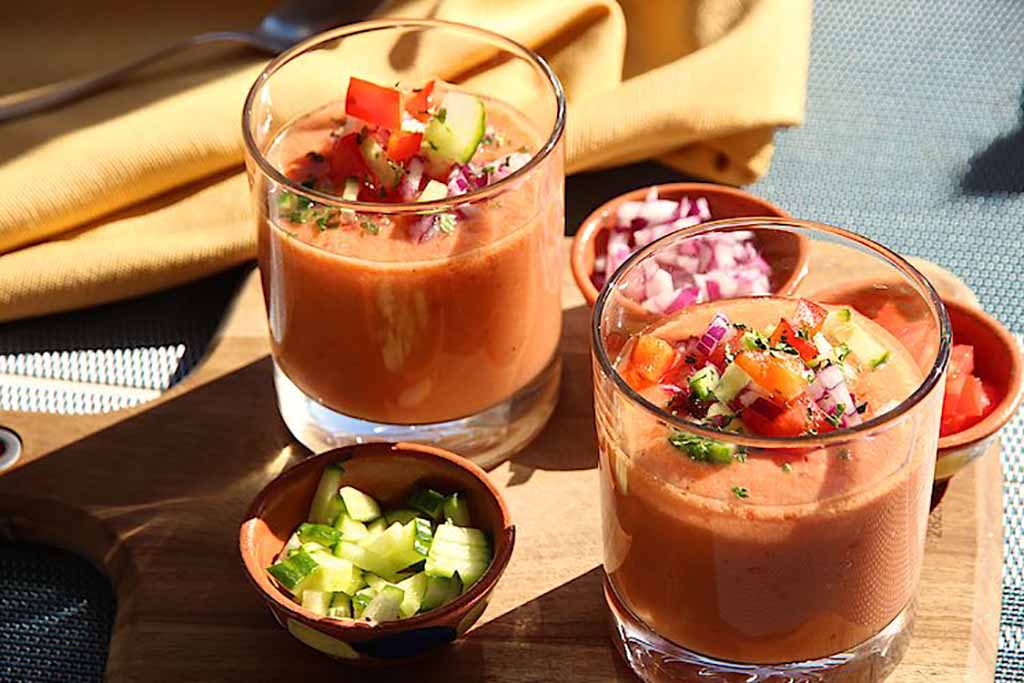
By Sabine de Gaspari from Discover Spain Today
Gazpacho is a vegetable soup served cold and originating from the region of Andalucia in the south of Spain. Over the years it has become a sort of staple food in Spain, especially during the hot summer months on the Iberian Peninsula.
Originally, gazpacho was made with just old, stale bread mixed together with olive oil, garlic and vinegar to form a sort of soup. However, over the years a mixture of fresh vegetables was added and became the gazpacho as it’s known nowadays.
Currently, the main ingredient for a traditional gazpacho is vine-ripe tomatoes. Other ingredients that have been included are cucumbers and peppers to provide extra body and freshness.
To make a good authentic gazpacho it is really important to use quality, fresh ingredients as there is no cooking involved and all ingredients are blended together raw.
13. Churros
By Raihaan Is’rafael from A Rai of Light
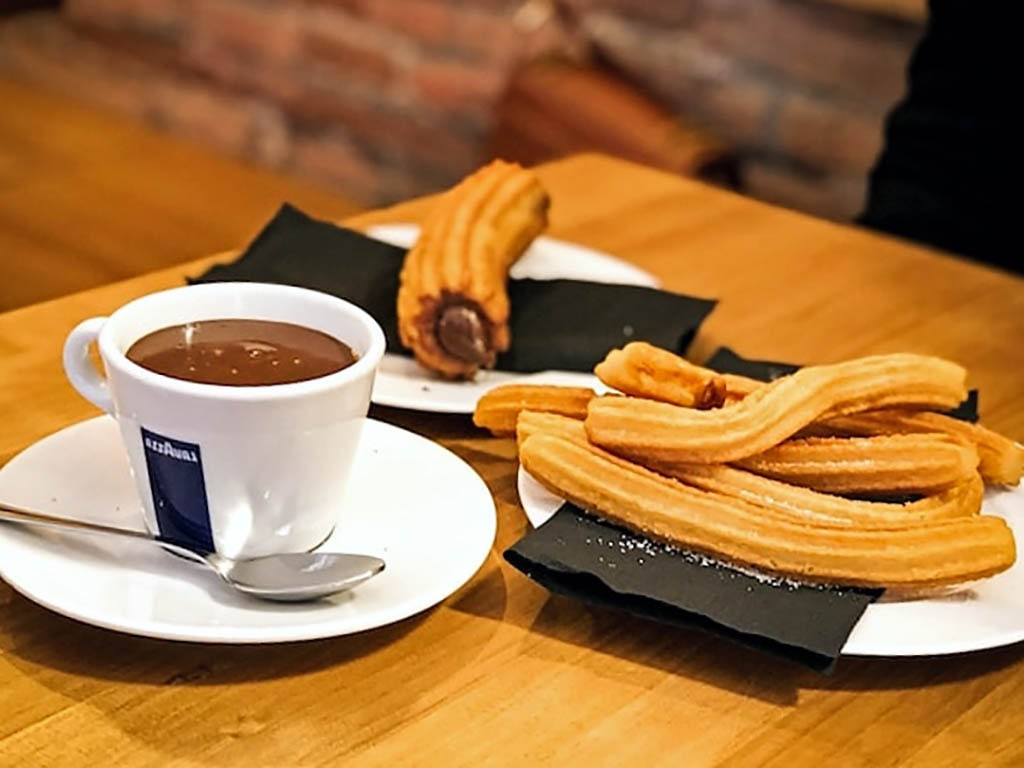
By Raihaan Is’rafael from A Rai of Light
When it comes to indulging in sweet treats and exotic food in Spain, churros are right there at the top of the list. Unlike many other parts of the world, churros found here can either be thin and knotted or long and thick.
These long and crispy doughnut-like pastries are normally enjoyed during breakfast, served with a variety of toppings such as cinnamon and alongside champurrado, café con leche, hot chocolate or dulce de leche for dipping.
Often referred to as porras or jeringos, these fluted snacks of fried dough are best enjoyed fresh. It’s the perfect combination of creamy and crunchy that can be enjoyed at any time of the day.
14. The different varieties of olives
By Nancy Michelle Côté from Ericeira Family Adventures
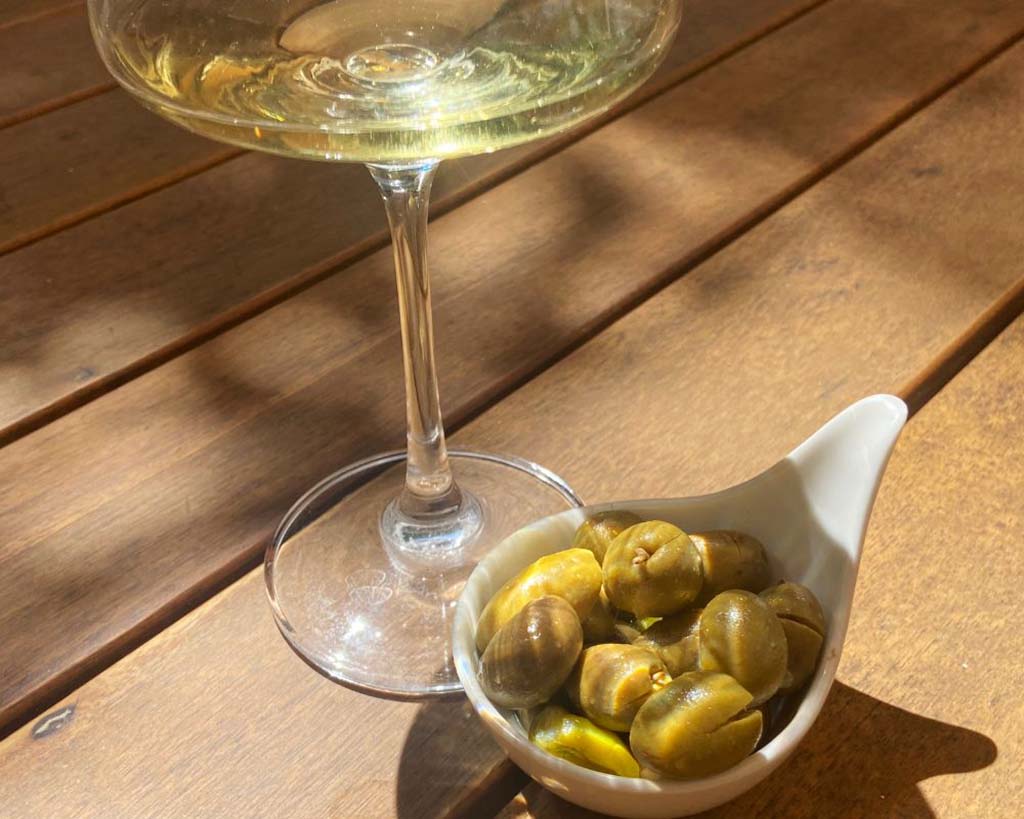
By Nancy Michelle Côté from Ericeira Family Adventures
Spain is home to over 200 varieties of olives, each with its unique characteristics and flavor profile. The most popular variety is Manzanilla, which originated in Seville and is known for its firm texture and mildly bitter taste.
Another famous type is Gordal, grown in Andalusia, with meaty flesh and a slightly sweet flavor. These are the largest olives The Arbequina variety hails from Catalonia and boasts a fruity flavor that intensifies with age. Lastly, the Hojiblanca type, which is prevalent in Malaga, is renowned for its slightly spicy notes and nutty flavor.
These different varieties of wholesome, briny olives have a rich history, tracing back to the cultivation of olives in Spain over 3,000 years ago.
Today, Spain is the world’s largest producer and exporter of olive oil and olives! Love them or hate them, you’ll get them served for free with your glass of wine on the streets of Portugal and Spain.
15. Porra Antequera
By Paulina Rubia from Paulina on the road
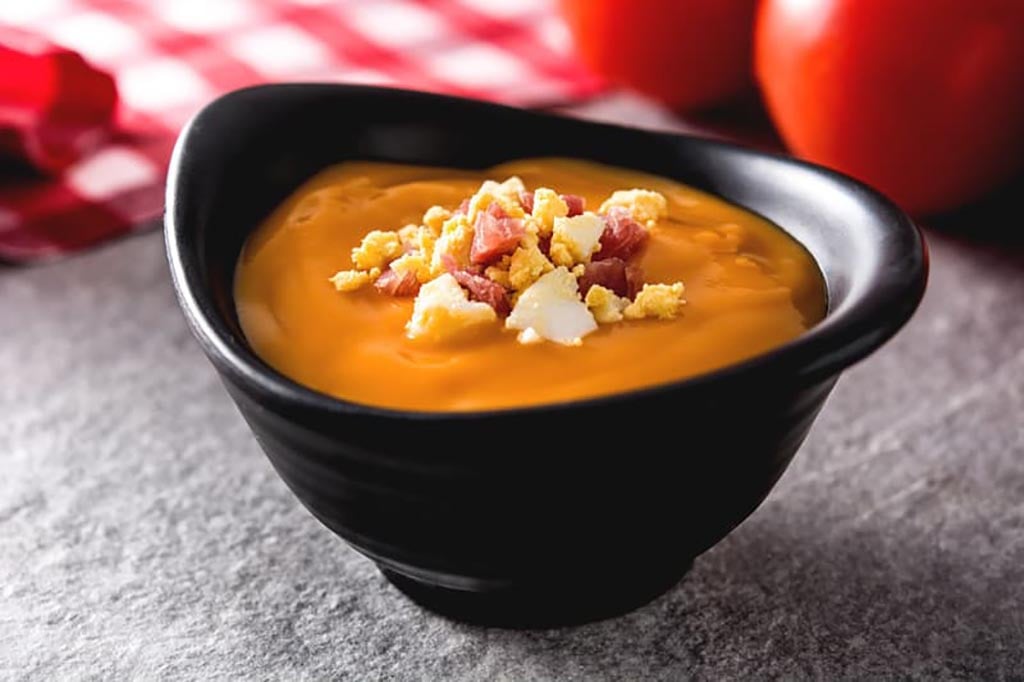
By Paulina Rubia from Paulina on the road
One of the traditional dishes of Spain is Porra Antequera. It is a cold soup with a thick texture. It is traditionally consumed in the Antequera region. The soup gets its name from the tool that is used to make it- the pestle (porra) and mortar. People also make it by hand by crushing or grinding it.
This soup was typically considered a food for the poor as they used to make it with leftover foods like tomatoes or bread. Since then, this dish has evolved and has now become a traditional food of the Antequera region.
The soup is known by different names in different places and there is still rivalry about its origin. Although being the same dish, it is called Catana in Alfarnate, and Ardoria in Seville. The type of meat used and the way they are made may also differ according to place.
The basic ingredients and method remain the same- using a pestle and mortar to crush garlic, breadcrumbs, oil, vinegar, salt, and water into a thick paste. Once the ingredients are combined, tomatoes are added to the mixture.
And if you wonder where to eat in Malaga, I recommend el Pimpi or Los Mellizos to try this soup.
16. Pimientos Fritos
By Victoria Maria from Guide your Travel
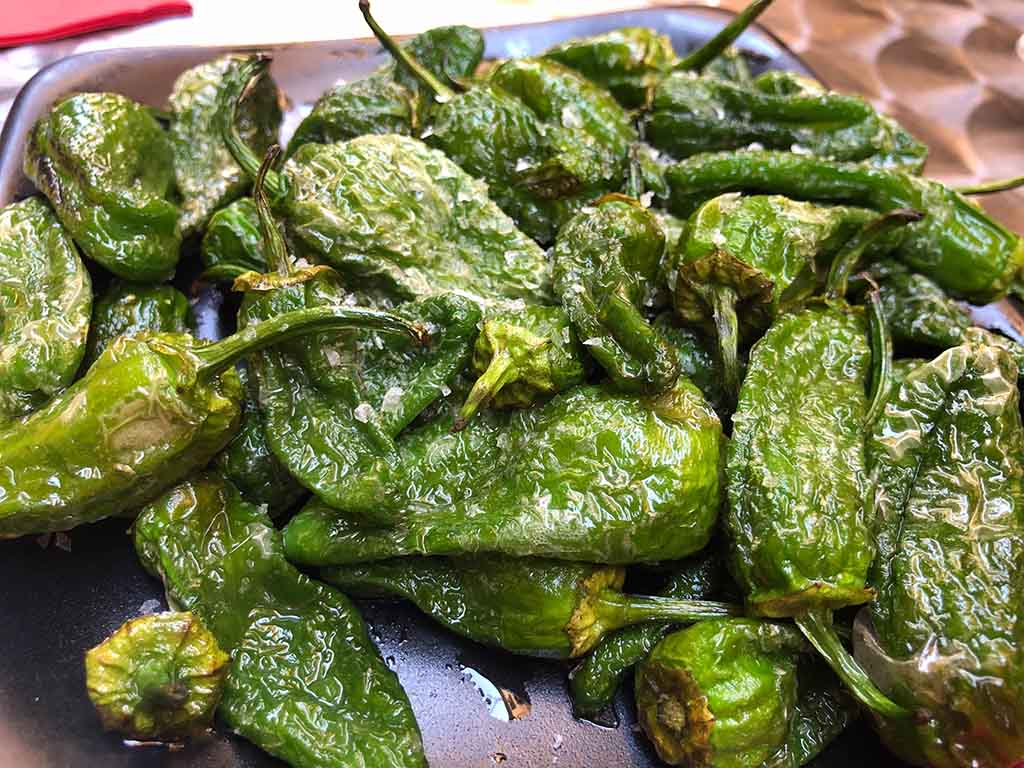
By Victoria Maria from Guide your Travel
Pimientos fritos, or fried peppers, are a popular dish in Spain, particularly in Andalusia. They are made by frying green peppers in olive oil until they are soft and slightly charred, and then seasoning them with salt.
One of the reasons pimientos fritos are so popular is because they are simple, delicious, and versatile. They can be eaten as a snack or as a side dish, and they pair well with a variety of other foods, such as meats, cheeses, and bread.
The history of pimientos fritos is not well documented, but it is believed that they have been a popular dish in Spain for centuries. Green peppers were introduced to Spain by the Moors in the 8th century, and they quickly became a staple of the Spanish diet.
Today, pimientos fritos are enjoyed by people all over Spain and beyond. Whether sitting at a tapas bar in Madrid or cooking them up in your own kitchen, they are a delicious and satisfying dish that is sure to please.
17. Ajoblanco (almond soup)
By Cristina Reina from My Little World of Travelling
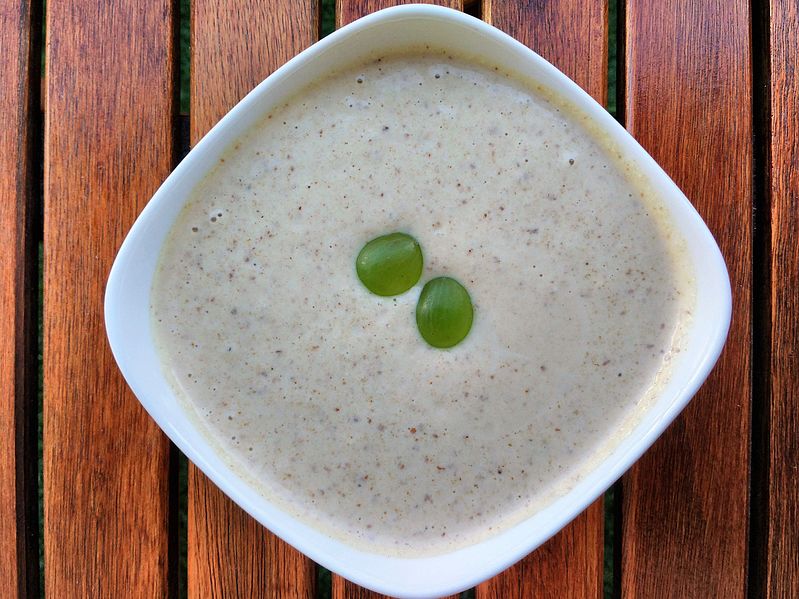
Pic by Popo le Chien from Wiki CC BY SA
Ajoblanco is one of the most traditional dishes in Malaga, in the south of Spain. It is often eaten during the summer month, but you can have it any time you wish.
This cold soup is made with crushed almonds, bread, garlic, water, olive oil, and salt, and it is usually topped with some green grapes.
The recipe dates back to Roman times, but it is believed that the Arabs, who were known for its use of nuts like almonds, came up with the current recipe.
Ajoblanco is the perfect meal for a summer day in Malaga. It is light, flavourful, and refreshing!”
18. Carrillada
By Joanna Davis from Andalucia in my Pocket
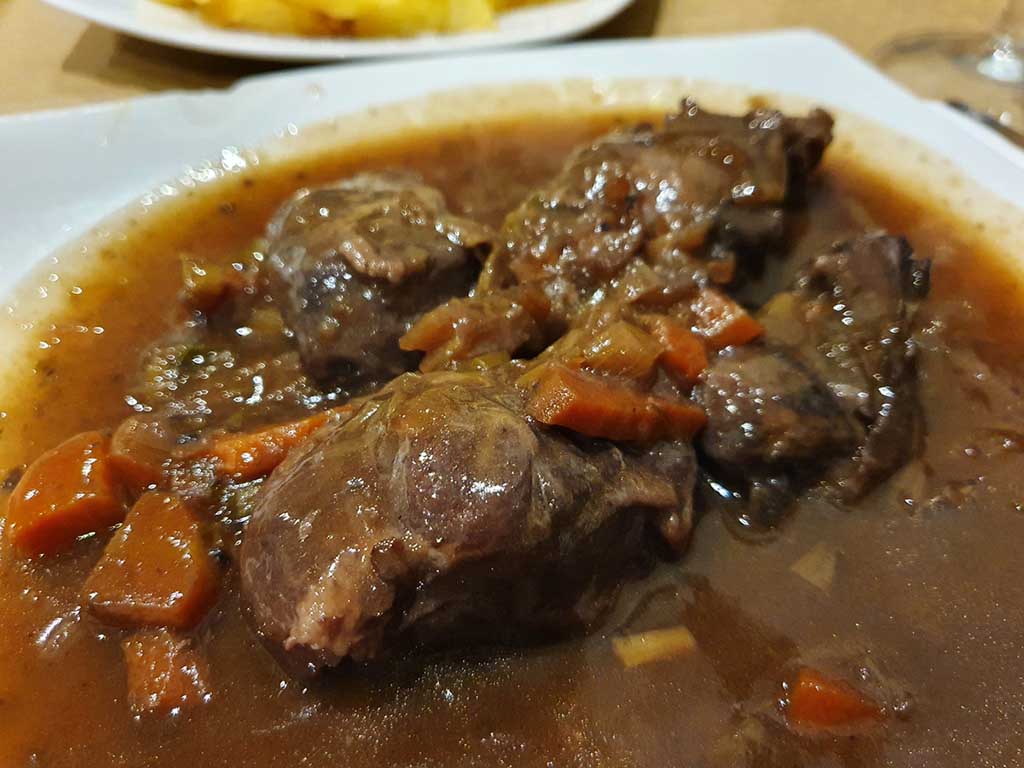
By Joanna Davis from Andalucia in my Pocket
Carrillada is one of the best dishes to eat in Seville. Born in this city, carrillada is an indulgent dish combining the best Spain has to offer: good quality pork and wine.
Carrillada consists of pork cheeks slowly cooked alongside carrots, onions, garlic and apples. The pork is simmered for hours in a Pedro Ximenez sweet wine from Jerez de la Frontera, and seasoned with cinnamon.
The result is an incredible tender stew with meat that melts in your mouth and a great warming flavour. You can order carrillada as a tapa or as a main course, when it’s served alongside chunky fries. This is a very popular dish all over Andalucia.
19. Pimientos De Padron
By Joanna Davis from The World in my Pocket
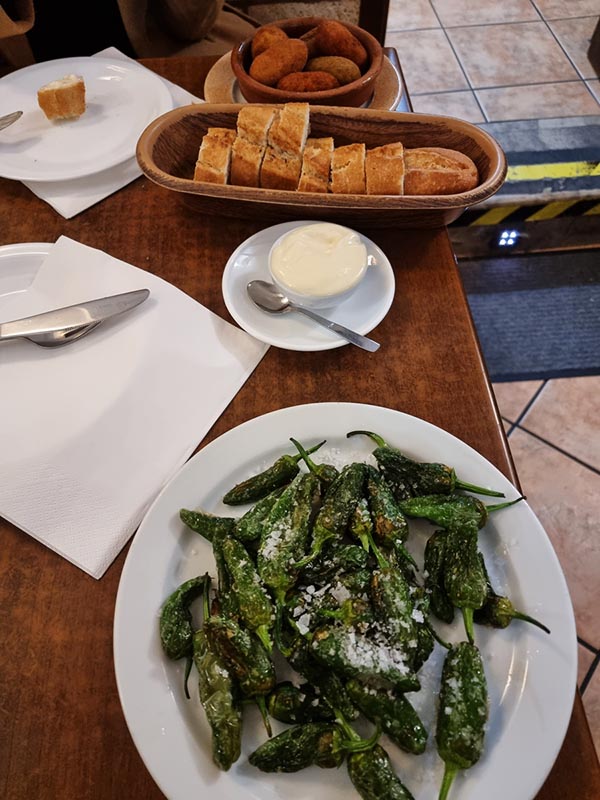
By Joanna Davis from The World in my Pocket
One of the most popular tapas in Spain is the pimientos de padron. It is a much-loved dish that is served all over the country and its islands. It is one of the most delicious dishes in Gran Canaria as well, alongside Tenerife, Mallorca and Menorca.
Pimientos de Padron is a very simple dish that packs so much flavour in it. The padron peppers come from a Coruna province, are small and usually sweet, with one in ten being spicy.
It is always a gamble around the table, who will pick the spicy one. The peppers are grilled until charred, and served topped with coarse sea salt.
20. Tortilla
By Denise Ekroos Macuk from Chef Denise
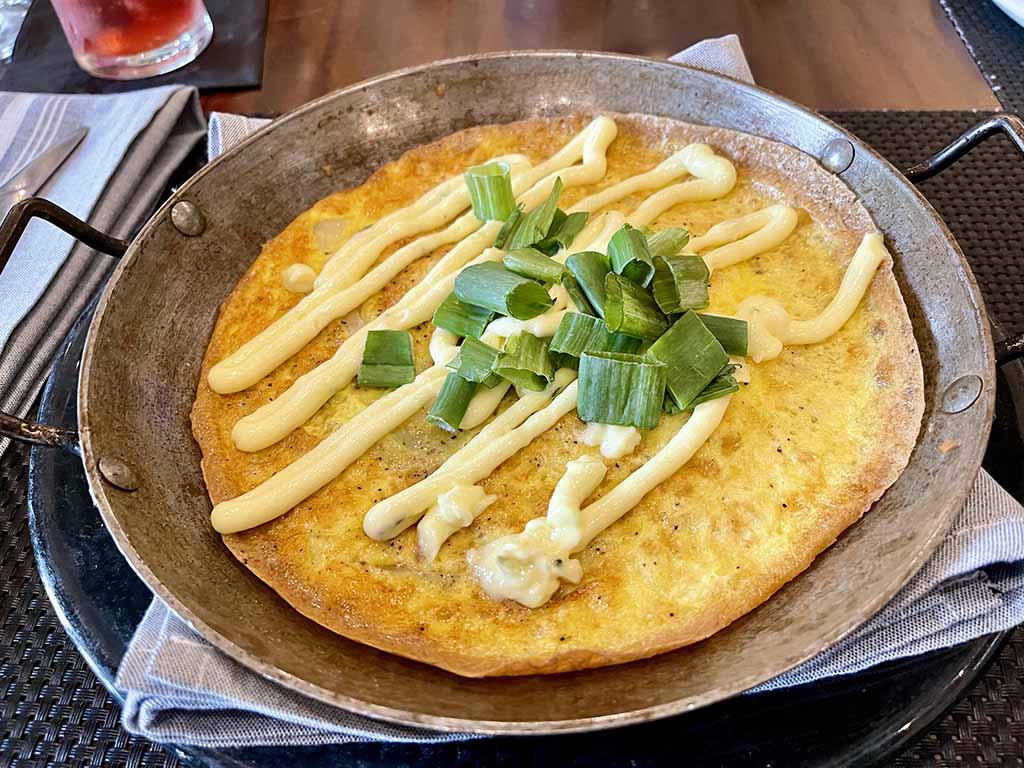
By Denise Ekroos Macuk from Chef Denise
When visiting Spain, you will definitely see Tortillas on many menus. The Spanish Tortilla or Tortilla Espanola is nothing like the Mexican tortillas used for tacos, quesadillas, and burritos.
It comes from the Spanish word “torta” which means cake. However, a Tortilla is nothing like a cake either. Spanish Tortillas are made with eggs and potatoes and sometimes onions. So they are more closely related to omelets and frittatas.
It may seem like a simple dish, but this is one of the traditional Spanish dishes that you must try. It’s a classic dish in Spain that’s typically eaten as a light meal or snack any time of day.
You’ll also find Tortillas in Basque Country and Barcelona as a pinxto—on a slice of bread with a toothpick. Every restaurant has their own recipe, so don’t be afraid to try it more than once!
21. Patatas Bravas
By Kristin Lee from Global Travel Escapades
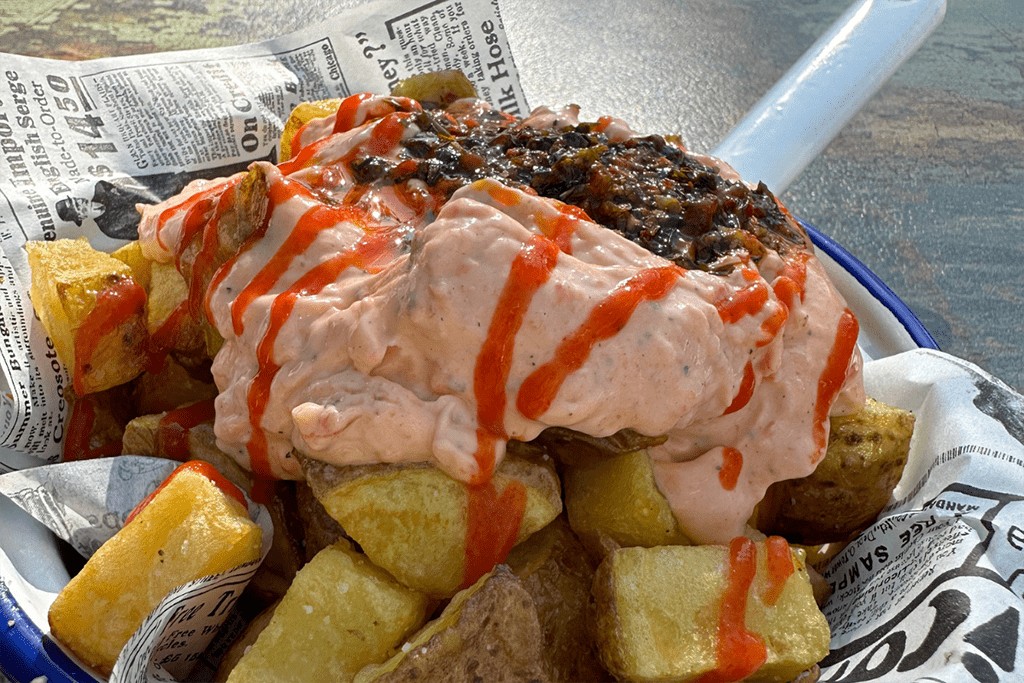
By Kristin Lee from Global Travel Escapades
One dish that any traveler to Spain shouldn’t miss out on eating is Patatas Bravas. It’s a classic Spanish tapa dish that originated in Madrid and has since become widely popular throughout the country.
This simple yet flavorful dish consists of white potatoes that have been cut into bite-size pieces and then fried to perfection. Afterward, the crispy potato bites are served with a spicy sauce, making it the perfect dish for an afternoon snack or appetizer before your main course!
So, next time you search for amazing food in Barcelona, Madrid, or anywhere else in the country, be sure to order some Patatas Bravas!
22. Espeto
By Allison Baxley from Renovating Life
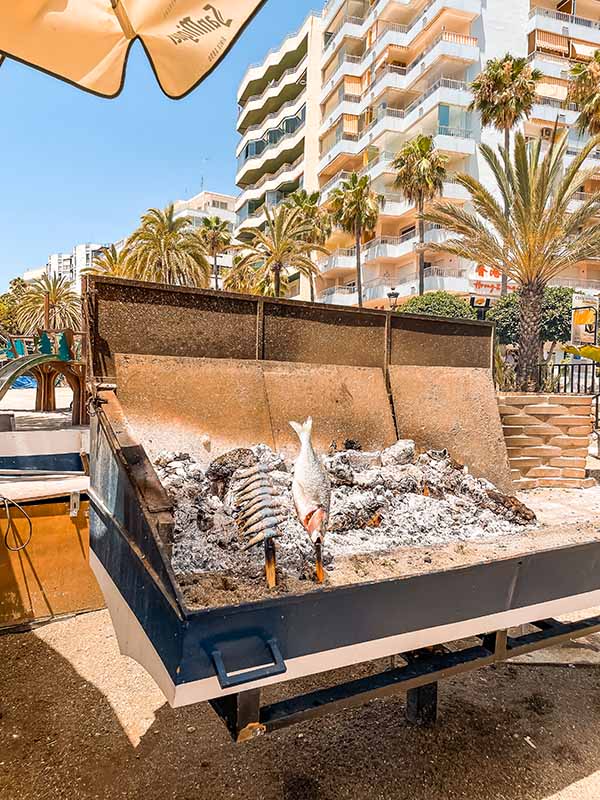
By Allison Baxley from Renovating Life
If you are planning a trip to Andalusia in Southern Spain, be sure to try one of the most popular dishes in the region—barbecued fish on a stick, or Espeto. This traditional way of cooking fish on a skewer involves grilling it over an open fire, often built in an old boat perched in the sand.
Espeto is a delicacy that is particularly popular in coastal Andalusia, where the long agricultural history, fertile soil, and varied seafood make for some of the tastiest and nutritious meals around.
Here, it’s customary to visit a “chiringuito,” a type of beachside bar and restaurant that serves Espeto along with cold beers and other tapas, a ritual for locals and tourists alike.
Chiringuito culture in Andalusia, fueled by a relaxed vibe, stunning views of the sea and the beautiful scenery is a fantastic way to experience Spain’s culinary delights and to socialize while enjoying good food and drinks on the beach.
23. Calamari & Alioli
From Rachel, at Costa Blanca Kids
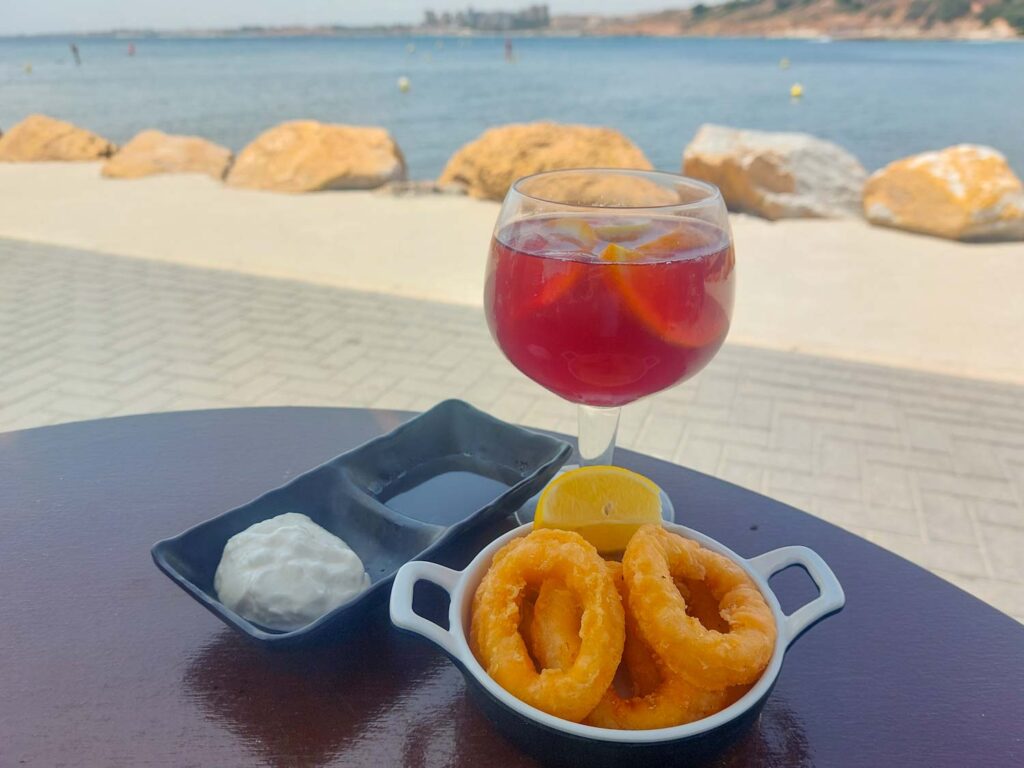
By Rachel of Costa Blanca Kids
When thinking about food from Spain, for many people tapas dishes are perhaps what first comes to mind. This way of eating small plates of food is popular throughout Spain and beyond.
One of the most famous tapas menu items is Calamari. This is a dish of squid that has been coated and deep-fried in a batter. The main body of the squid is usually cut into ring shapes first before coating, with the tentacles sometimes also included. This visual appearance in rings can even make them a hit with kids and less adventurous adults, who perhaps wouldn’t otherwise normally consider eating squid.
Calamari is eaten all over Spain, but is obviously most prevalent in coastal areas. The most common serving style is called Calamari a la Romana, which features a thicker, wet batter coating. A regional variant is Calamari a la Andalusia, which instead has a dry flour coating to produce a lighter coating.
Whatever the coating, the key to good Calamari is not over-cooking them, as if they are fried for too long they can become overly chewy. They are delicious when soft and squidgy in consistency.
Of course, to enjoy them at their best you will need something tasty to dip them into. Arguably the perfect accompaniment is alioli, a kind of Spanish garlic mayonnaise. Where alioli differs from a conventional mayonnaise though, is that it does not contain any eggs. The emulsifying effect of crushing garlic into olive oil is enough to produce its white creaminess.
Together, Calamari and alioli make a great snack, or indeed a tasty seafood element as part of a larger tapas meal. Being high in protein, squid is also a really healthy thing to eat.
It’s easy to want to devour as many of these Spanish foods and desserts as you can when on holiday. They are incredibly drool-worthy and mouth-watering! We tried to eat as many as we could on our recent trip to Spain, but still have a long way to go. How many have you eaten?
Other Foodie Posts You’ll Love
- What to eat in Delhi
- What to eat in Seoul
- Marbella resorts to stay at
- Where to eat in Lucknow
- Eat here in Lima, Peru
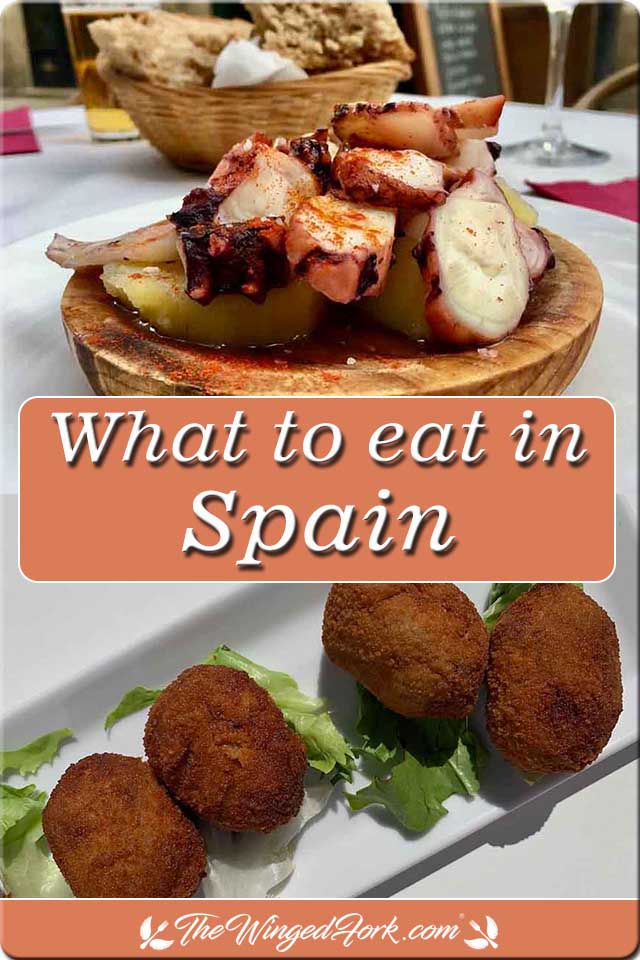
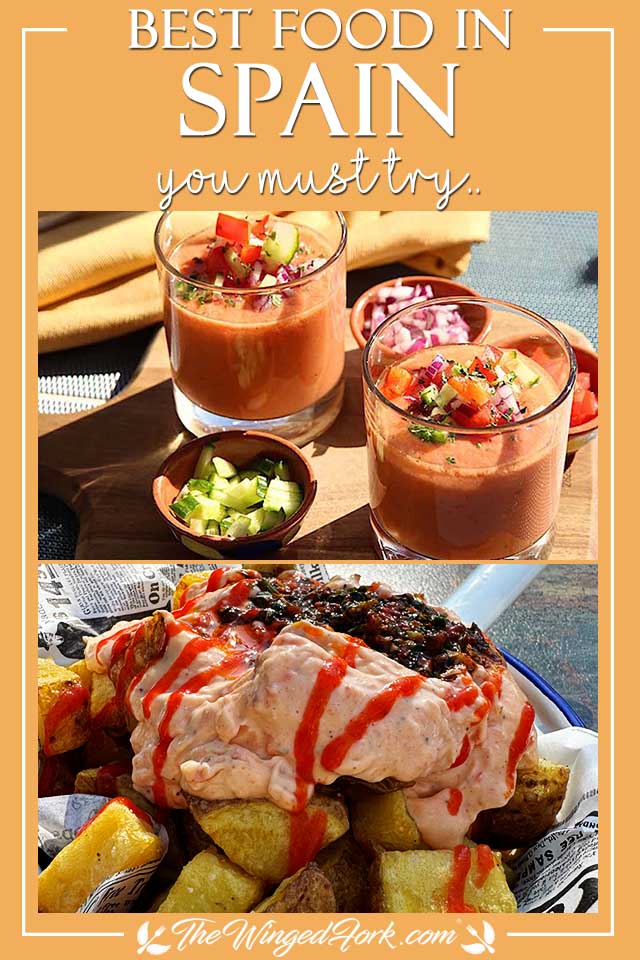
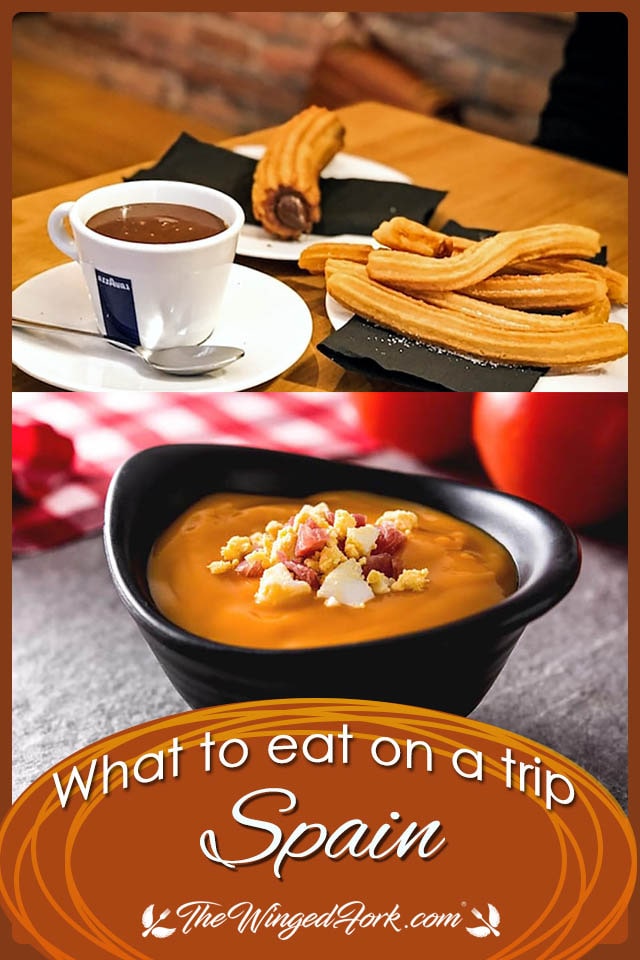
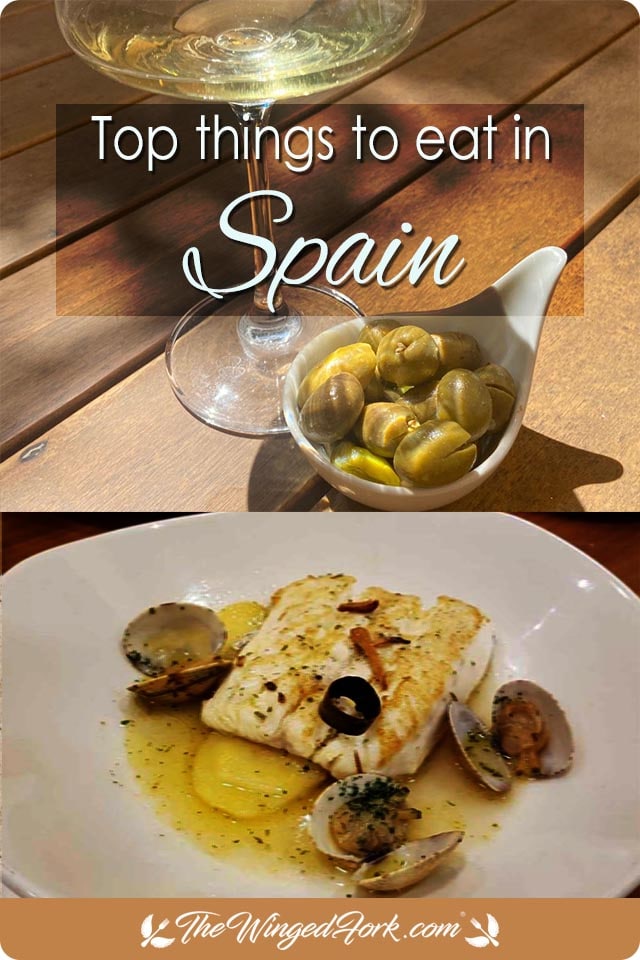

I’m an East Indian foodie and travel blogger from Bombay, India. I’ve travelled across parts of Europe and Asia, and love writing about my experiences with people and cultures. And naturally, I love food, wine, and travel, and have an endless bucket list of places to go to, and experiences I must blog about.
I also love baking and experimenting with food, with a little help from my family. If you must know, my favorite things are nice rainy days, the smell of cakes in the oven, playing in the snow, glasses of wine, and dark chocolate.
More info about me here!
